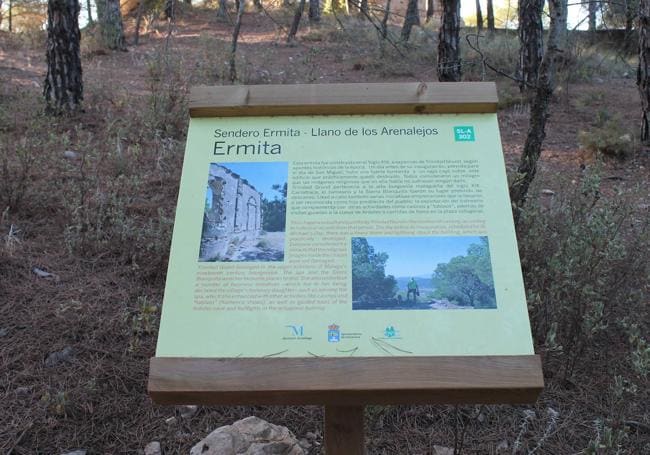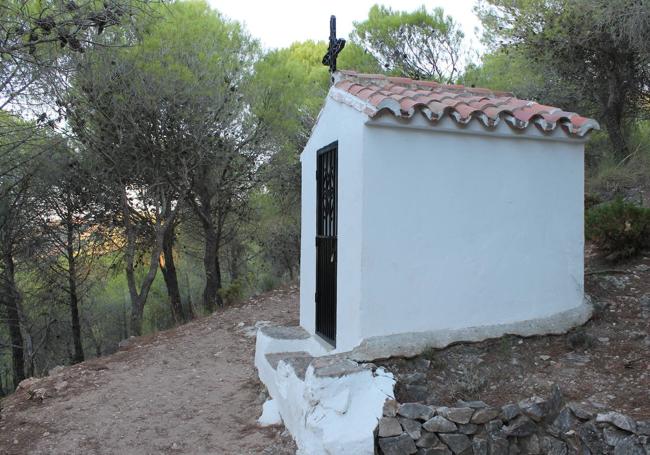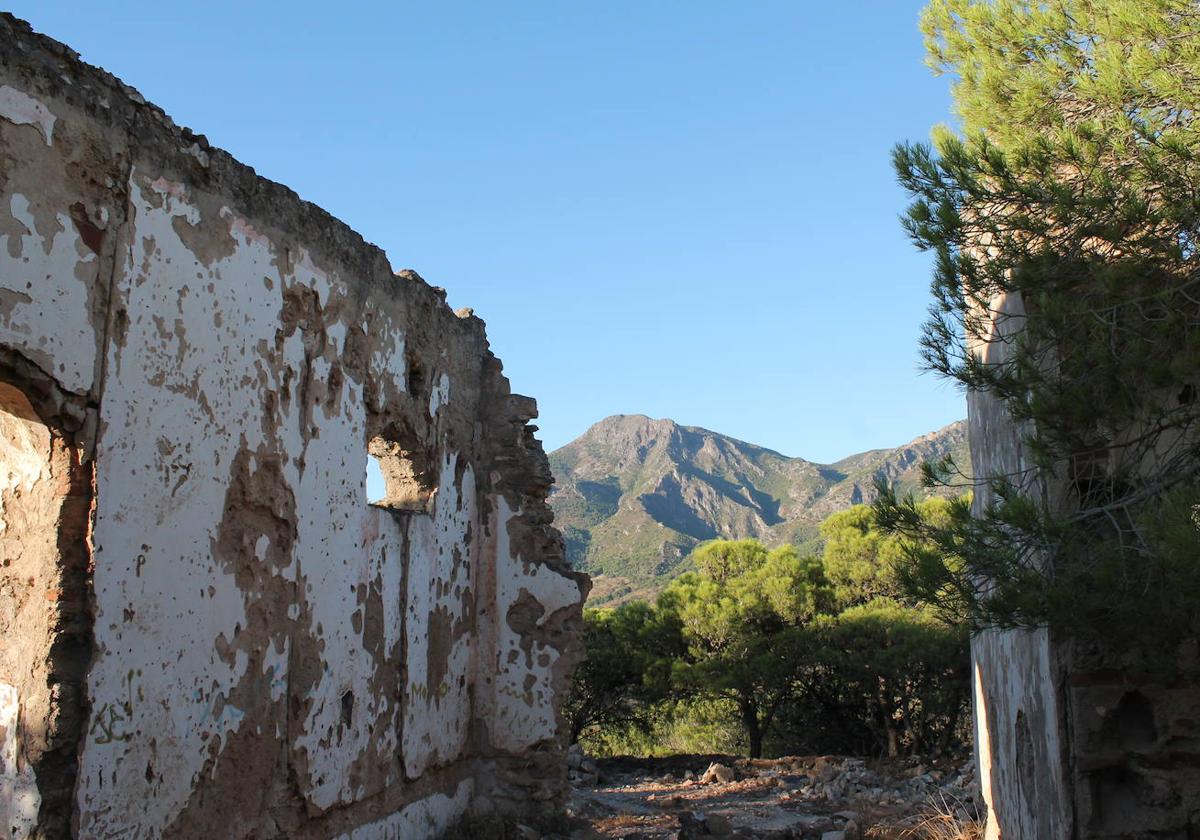The Carratraca chapel that was destroyed the day before its inauguration
Nestled in the Blanquilla mountain range, it was commissioned by Trinidad Grund, but was struck by lightning on the eve of St Michael's Day
Walls and some doors and windows are the only visible remains of what once was a shrine to Nuestra Señora de la Salud (Our Lady of Health), in the highest part of Sierra Blanquilla, in the municipality of Carratraca. It stands in an idyllic location, with panoramic views of the Sierra de Alcaparaín mountains. More than a century after its destruction, it is still difficult to distinguish between history and legend.
It is known that the chapel was paid for by Trinidad Grund and that it was damaged by lightning in a storm. Almost all versions of the story indicate that it was the day before its inauguration, on 28 September, the eve of San Miguel (St Michael); the year is unclear, although it is most likely to have been in the late 19th century.
The shrine, which was dedicated to Nuestra Señora de la Salud, was almost razed to the ground by the aforementioned lightning strike. Its roof collapsed, but the walls survived as did, curiously, many religious images, according to the story told in Carratraca. Among them, a painting, which was protected in the village church, until it was also destroyed in the summer of 1936, at the beginning of the Civil War.

Archaeologist Pedro Jesús Sánchez Bandera explained that the little that is known about this construction, now in ruins, is that it followed "the pattern of the Calvary hermitages, being built in the highest part of the sierra, but close to the village". It was precisely this location that led to its destruction.
Sánchez Bandera, administrator of Arqueosur, even doubts the story that it hadn't yet been opened, since all the images that were supposedly found under the rubble suggest that it was already used by the public.
Beyond the miraculous salvation of the imagery, which is not documented, this story also delves into the biography of the benefactor of the chapel. Trinidad Grund, whose family was of Prussian origin and moved to Malaga in 1832, is known for the numerous personal misfortunates she suffered until her death.
Although there is a legend that claims that the chapel was rebuilt and then struck by a second bolt of lightning, what is believed today is that the building, partially ruined, was abandoned. In fact, many years later, an even smaller shrine was built in the same mountains, but lower down and closer to the village.
How to see it
In any case, some architectural elements of this old shrine to Nuestra Señora de la Salud are still partially standing. Today it is relatively easy to access, as there is a circular hiking route, which starts in the village itself, that goes past it.

The walk, officially called Ermita-Llano de Arenalejos (SL-A-302), begins in the street that runs from the old Casa de Doña Trinidad Grund -currently the town hall of Carratraca - to the old bullring. Barely a kilometre from the start, you pass a signpost. From there you only have to walk about fifty metres to reach the remains of the chapel. As it is in ruins, you should avoid going inside. At least you will be able to see the panoramic views from this elevated enclave in the Blanquilla mountains.
Today the chapel is part of the history of Carratraca, one of the villages in Malaga province that have been declared as 'historic-artistic sites' of Andalucía. Carratraca, which was once dependent on the municipality of Casarabonela and was called Puebla de Baños, was an important refuge for the Malaga bourgeoisie of the 19th century, as was the case of Trinidad Grund herself.
In the opinion of Pedro Jesús Sánchez Bandera, the building even deserves to be restored or put to good use, "for its historical value and its location" in the highest part of the Sierra Blanquilla. "It would be very positive for the village," added the administrator of Arqueosur.
The restoration would create another emblem of the heritage of the village, which is already known for its spa with sulphurous waters or for such important buildings as the aforementioned Casa de Doña Trinidad Grund or the old bullring, partly dug out of the sierra itself.
Sánchez Bandera also points to the uniqueness of the village of Carratraca, which he compares to "a town from the Wild West", due to the fact that during its splendour it was a place linked closely to leisure. Not in vain, it even had its own casino.

